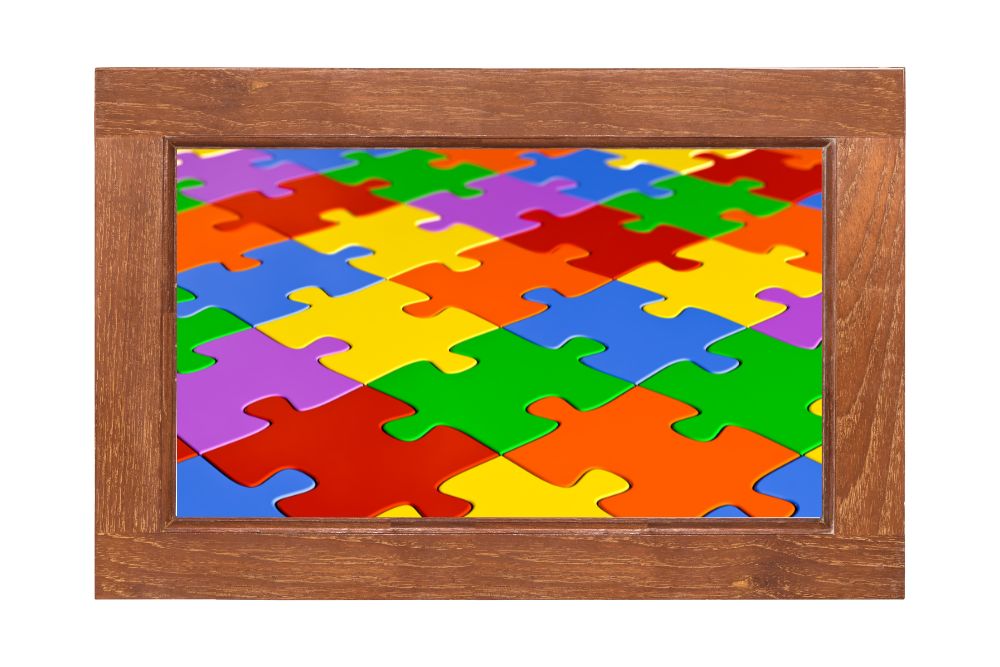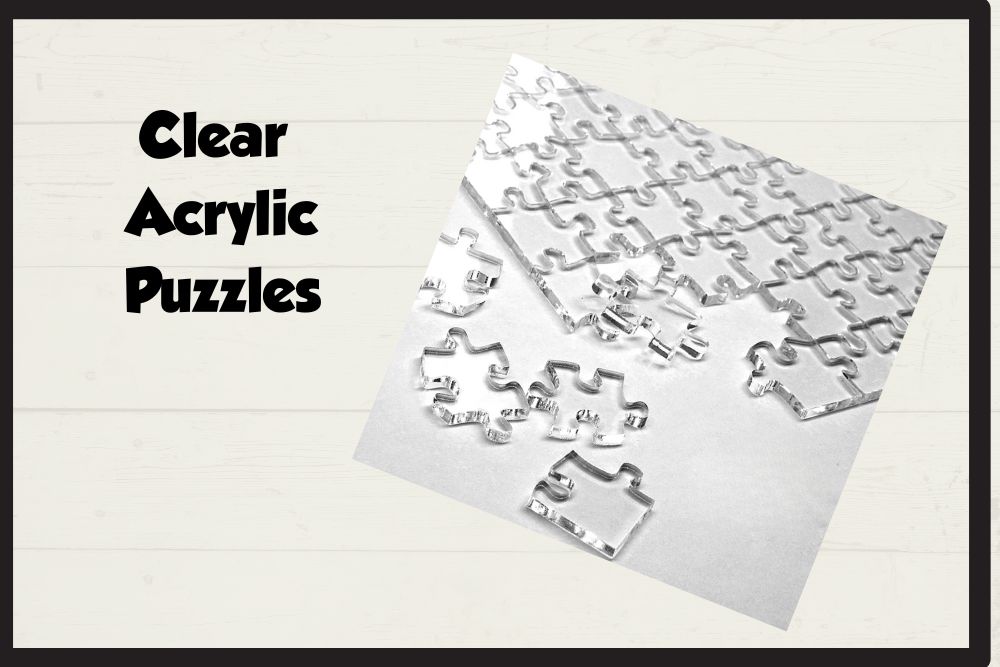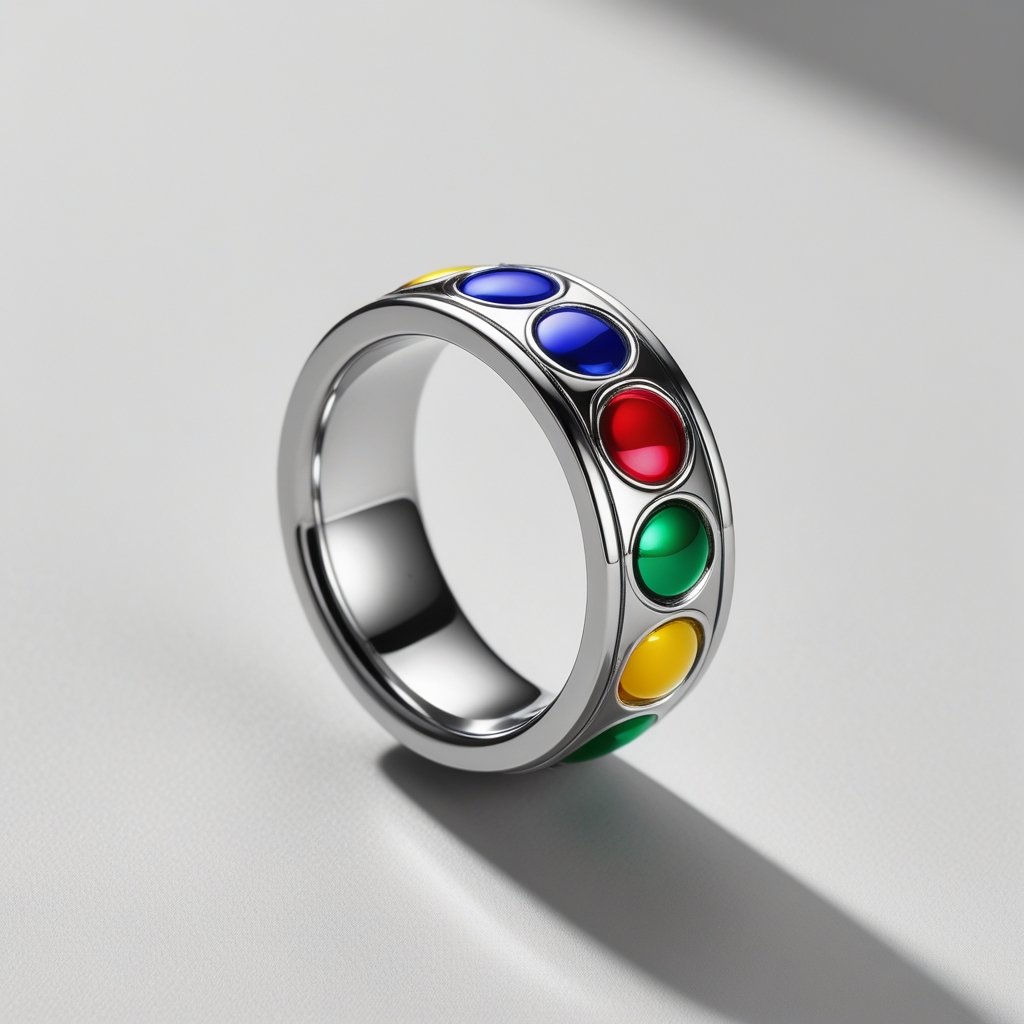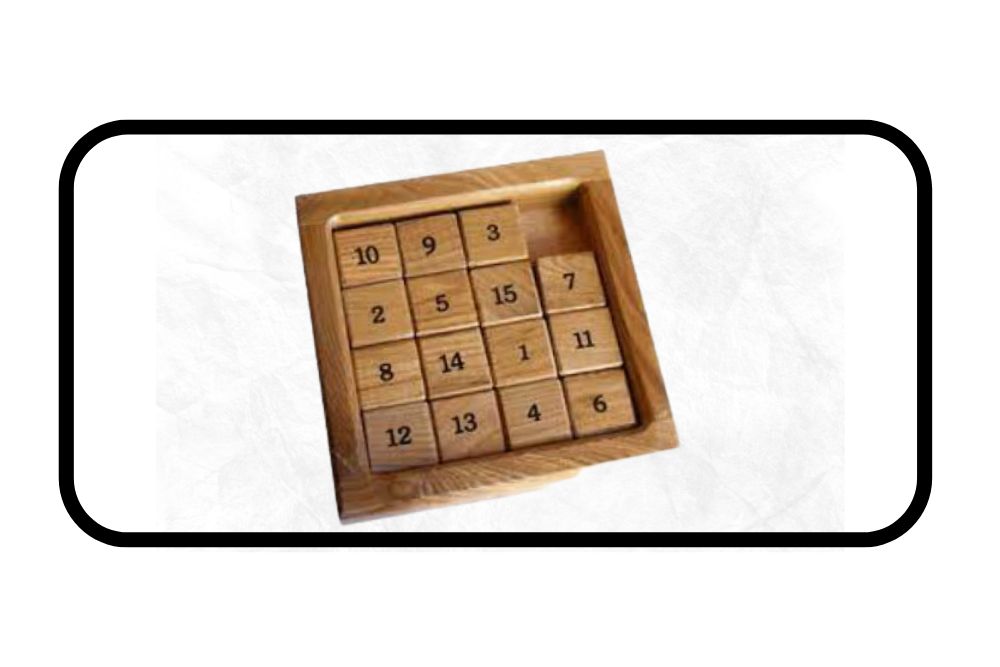Jigsaw puzzles have long been a popular form of entertainment, providing hours of fun and challenge for people of all ages.
They come in various shapes, sizes, and complexities, making them a favorite pastime for many. But have you ever wondered how jigsaw puzzles are made?
The process begins with the selection of a suitable image, which can be an artwork, a photograph, or any other visually appealing design.
This image is then transformed into a large print, which is glued onto a sheet of cardboard or other sturdy material. Once the adhesive has dried, it’s time for the cutting process to create the unique pieces that make up the jigsaw puzzle.
Traditionally, cutting the puzzle pieces has involved a combination of machine and hand-crafted techniques. In some cases, specialized saws and cutting tools are used to make precise cuts based on a pre-determined pattern.
Modern methods may utilize advanced technologies like laser cutting or waterjet cutting for even greater precision in shaping the puzzle pieces.
Regardless of the technique, the ultimate goal is to create interlocking shapes that will fit together smoothly, forming a complete picture when assembled and providing a satisfying challenge to puzzle enthusiasts.
In this article, we’ll take a closer look at the intricate steps involved in making a jigsaw puzzle, including the traditional and modern techniques used to create those interlocking pieces that provide hours of entertainment and satisfaction, types of puzzles and even the history!
So, get ready to dive into the world of jigsaw puzzles and discover the secrets behind this beloved pastime!
History of Jigsaw Puzzles
The origin of jigsaw puzzles dates back to the 18th century, with London-based cartographer and engraver, John Spilsbury, credited as their inventor in 1760.
Spilsbury created the first known jigsaw puzzle by attaching a world map onto a wooden board and cutting the countries out to help teach geography.
These early puzzles were called “dissected maps” and were primarily used as educational tools. They were made by attaching maps or illustrations onto flat wooden panels and cutting them into interlocking shapes.
The pieces were usually made from hardwoods like mahogany due to their durability and ease of handling. The complexity of the puzzles varied, with some aimed at children and others at adults for leisure activities.
By the 19th century, jigsaw puzzles expanded their subject matter beyond maps, covering scenes from history, literature, and nature.
Technological advancements in printing and the emergence of fretsaws allowed for more intricate designs and mass production.
As a result, jigsaw puzzles became more affordable and accessible, increasing their popularity among people from all walks of life.
In the early 20th century, wooden puzzles evolved into the more familiar cardboard jigsaw puzzles we know today.
This shift was due to the invention of die-cutting machines, which could cut large quantities of puzzles more quickly and at a lower cost.
These changes also opened up the market to a wider variety of themes and difficulty levels, catering to different interests and age groups.
Types of Jigsaw Puzzles
Jigsaw puzzles are made from a variety of materials, each offering unique features and benefits. In this section, we will discuss the four main types: cardboard puzzles, wooden puzzles, acrylic puzzles, and foam rubber puzzles.
Cardboard Puzzles

Cardboard puzzles are the most common and affordable option. They are typically made from layers of paper and cardboard, providing a lightweight and easy-to-handle puzzle. Some of the advantages of cardboard puzzles include:
- Cost-effective production
- Wide range of designs and sizes available
- Eco-friendly options using recycled materials
However, cardboard puzzles may not be as durable as other options and can be prone to wear and tear over time.
Wooden Puzzles

Wooden puzzles are often made from plywood or hardwood, offering a more durable and long-lasting puzzle experience. They are known for their high-quality appearance and feel. Key features of wooden puzzles include:
- Greater durability than cardboard puzzles
- Unique and intricate cutting styles
- Heirloom quality, making them ideal for collectors
While wooden puzzles may be more expensive than cardboard puzzles, they offer a longer-lasting and more satisfying puzzle experience.
Acrylic Jigsaw Puzzles
Acrylic jigsaw puzzles are made from a durable, non-toxic plastic material. They offer unique features, such as:
- Transparent design, allowing for innovative puzzle imagery
- Weather-resistant, making them suitable for outdoor use
- Easy to clean and maintain
Acrylic puzzles are relatively new to the market and can be more expensive than their cardboard counterparts.
Check out this really cool iridescent acrylic puzzle on Amazon. There are also color changing Iridescent acrylic puzzles too!

Foam Rubber Puzzles

Foam rubber puzzles are made from a soft, flexible material that is both lightweight and durable. They are often used for educational purposes, as they can be easily handled by children. Some notable aspects of foam rubber puzzles include:
- Safe and non-toxic for children to play with
- Water-resistant, making them suitable for various environments
- Available in a range of colors and themes
Jigsaw Puzzle Manufacturing Process
Jigsaw puzzles are created through a multi-step manufacturing process that involves design and image selection, cutting die creation, and puzzle piece production. In this section, we will explore each of these stages to better understand how jigsaw puzzles are made.
Design and Image Selection
The first step in creating a jigsaw puzzle is selecting an image or artwork to be used as the design. This can be a photograph, painting, or digital image, and it plays a significant role in determining the puzzle’s difficulty and overall appeal. Manufacturers often work with artists, photographers, or licensing companies to obtain high-quality images for their puzzles. Once selected, the image is resized and adjusted to fit the puzzle’s dimensions, and a digital proof is created before moving on to the next stage in the process.
Cutting Die Creation
Once the image design is finalized, the next step involves creating a cutting die. A cutting die is a custom-made tool used to cut the puzzle pieces out of cardboard sheets.
This die is made of steel blades bent into unique shapes to form the interlocking puzzle pieces.
The blades are then mounted into a die board, typically made of plywood or a similar material.
This process can be manual, where skilled craftsmen bend the steel blades by hand, or computer-based, using software that generates the puzzle piece shapes and guides the bending blades.
Puzzle Piece Production
In the final stage of jigsaw puzzle manufacturing, the image is printed onto the cardboard sheet, which is typically 1-3mm thick.
The printed sheets are then aligned with the cutting die, and a press is used to cut the puzzle pieces. This process ensures that the pieces fit together correctly and that the image maintains its original quality.
Once the puzzle pieces are cut, they undergo quality control to ensure that no pieces are missing, damaged, or misprinted.
The completed puzzles are then packaged and shipped to distributors and retailers, where they are sold to customers around the world.
Cutting Tools and Techniques
Jigsaw puzzles are created using a variety of cutting tools and techniques. In this section, we will discuss the three most common methods: metal cutting dies, laser-cutting, and hand cut methods. Each approach offers unique advantages and challenges in puzzle making.
Metal Cutting Dies
Metal cutting dies are essentially cookie-cutter-like tools made from a strong, durable metal. They are designed with sharp edges that can cut through a variety of materials, such as cardboard, foam board, and wood.
The cutting process involves applying force and pressure onto the puzzle sheet to create the desired puzzle piece shapes.
The use of metal cutting dies offers high precision and uniformity in the puzzle piece cuts, as well as the ability to produce large quantities of puzzles quickly.
However, the initial cost of creating these custom dies can be quite high. Moreover, they are subject to wear and tear over time, requiring eventual replacement.
Laser-Cutting
Laser-cutting is a more modern technique for creating jigsaw puzzles. This method involves using a laser to precisely cut the puzzle pieces from various materials.
The force and pressure exerted by the laser beam ensure a clean and accurate cut.
Laser-cutting offers high precision and the ability to create intricate designs and patterns for puzzle pieces.
This technique also allows for faster production times compared to hand-cut methods. However, the cost of laser-cutting equipment and energy consumption may be higher.
Hand Cut Methods
Hand cut methods involve using tools such as coping saws, scroll saws, X-Acto knives, and marquetry saws to manually cut each puzzle piece.
While this approach can be time-consuming and labor-intensive, it offers a personal touch and the possibility of creating unique, one-of-a-kind puzzles.
The main difficulty with hand cut methods lies in achieving consistency and precision in the cut pieces.
Nonetheless, skilled artisans can produce exquisite jigsaw puzzles using these techniques.
Hand cut methods are generally reserved for boutique or specialty puzzles, where the artisan’s craftsmanship is highly valued.
Unique Jigsaw Puzzle Designs
Jigsaw puzzles have evolved to include a variety of unique and creative designs that challenge and engage puzzle enthusiasts.
These distinctive puzzles often incorporate interlocking, two-dimensional pieces that form a larger, mosaiced image when pieced together.
Some unique jigsaw puzzles may utilize unconventional shapes and patterns within the tiling puzzle, such as curved pieces or irregular edges.
These designs add an extra level of difficulty and intrigue to the puzzle-solving experience. Additionally, color plays a significant role in making these puzzles more appealing and stimulating for the mind.
Jigsaw puzzles can also incorporate artistic elements, such as surreal or optical illusions, which challenge the perception of conventional jigsaw puzzle design. Some examples might include:
- Geometric patterns that create optical illusions
- Tessellations that seamlessly repeat and interconnect
- Fractals that exhibit self-similar patterns at various scales
Moreover, technology has also played a part in driving innovation in jigsaw puzzles.
Designers are able to leverage digital capabilities, such as 3D printing, to develop unique and intricate pieces that would be otherwise challenging to create using traditional methods.
Jigsaw Puzzles in Popular Culture
Jigsaw puzzles have been a part of popular culture for many years, both as a source of entertainment and education.
Brands like Ravensburger have become synonymous with quality puzzles, captivating consumers with a variety of themes such as castles and landscapes.
In recent years, jigsaw puzzles have found their way into various forms of media.
Video content featuring time-lapse puzzles being solved has gained popularity on platforms like YouTube, while some avid fans have taken to Reddit to share their completed works and discuss their experience with fellow enthusiasts.
Amid the coronavirus pandemic, jigsaw puzzles saw a resurgence in interest as people sought indoor activities during periods of lockdown.
Many companies experienced a spike in orders as consumers looked for ways to occupy their time while staying safe at home.
Even the world of opera has not been immune to the jigsaw puzzle craze.
In an effort to stay connected with audiences despite social distancing, some opera houses have released jigsaw puzzles featuring scenes from their productions or images of their iconic venues.
Educational and Recreational Value
Jigsaw puzzles are appreciated not only for their recreational value but also for their educational benefits.
They provide a unique way to learn and understand various subjects such as geography, nature, and history.
Both children and adults can develop skills like problem-solving, concentration, and spatial awareness through puzzle-solving.
Geography is a common subject for jigsaw puzzles, with maps of countries, continents, and the world being popular choices.
Completing a puzzle based on a map can help individuals familiarize themselves with regions and their borders.
Moreover, some puzzles feature topographical information or notable landmarks, providing an engaging way of learning about the terrain and cultures of different areas.
Jigsaw puzzles can also depict various elements of nature, including wildlife, ecosystems, and landscapes.
These puzzles help in understanding the intricacies of specific habitats while stimulating curiosity about the natural world.
They are often found in nature centers and museums, where they can complement other educational resources and exhibits.
Museums use jigsaw puzzles as a method to interact with visitors and provide opportunities for learning.
They can offer puzzle versions of their artworks or historical artifacts, enabling people to gain a deeper understanding of a subject as they piece the puzzle together.
Additionally, jigsaw puzzles are often used in educational programs for children, promoting learning through play and encouraging teamwork and communication.
In conclusion, jigsaw puzzles provide an entertaining yet intellectually stimulating activity, bridging the gap between recreation and education.
Their versatility allows for the exploration of numerous subjects, making them a valuable resource in both learning environments and leisurely settings.
Environmental Considerations
When it comes to jigsaw puzzles, there are several environmental factors to consider. The materials used and the manufacturing processes can have varying impacts on the environment.
This section delves into aspects such as glue, woodworker involvement, paperboard usage, and the recyclability of puzzle components.
One key element in the creation of jigsaw puzzles is the adhesive glue that binds the printed image to the puzzle substrate.
In many cases, puzzle manufacturers have transitioned to more eco-friendly glue options, utilizing water-based adhesives rather than solvent-based ones.
This shift has led to a reduction in the release of harmful volatile organic compounds (VOCs) during production.
A significant aspect of jigsaw puzzle production is the involvement of woodworkers who cut the pieces.
Although automated machines are commonly used, some artisans still handcraft their puzzle pieces. When the jigsaw puzzles are made from sustainably sourced wood, this practice supports responsible forest management and preserves valuable resources.
The use of paperboard is another consideration in puzzle production. Manufacturers often opt for paperboard made from recycled materials or sourced from sustainably managed forests.
This choice promotes a circular economy and reduces the environmental impact of extracting virgin raw materials.
Lastly, the recyclability of jigsaw puzzles should be taken into account. Many puzzles can be disassembled and their components recycled after reaching the end of their usable life.
This process can significantly minimize the environmental footprint of these products and contribute to a more sustainable planet.
Key Takeaways
Jigsaw puzzles have been a popular form of entertainment and mental stimulation for centuries.
The process of creating these puzzles involves several essential steps, which ensure a high-quality final product. In this section, we will highlight the key takeaways from the puzzle-making process.
Firstly, the design stage is crucial for creating an engaging and visually appealing puzzle.
Puzzle designers select images that are intricate, colorful, and suitable for various difficulty levels.
The use of high-resolution images ensures sharp details, making it easier for puzzle enthusiasts to put the pieces together.
Next, the cutting process involves the use of specialized machinery that ensures precision and consistency.
Laser-cutting machines or roller-cutting machines are commonly used in the puzzle-making industry. These machines enable manufacturers to produce intricate and evenly cut pieces that fit together perfectly.
- Design stage: High-resolution images, intricate and colorful designs
- Cutting process: Use of specialized machinery for precision and consistency
- Quality control: Detailed inspection to confirm the accuracy and completeness of the puzzle
- Eco-friendly materials: Increasing use of sustainable and recyclable materials
Quality control is an essential aspect of puzzle production. Manufacturers thoroughly inspect each puzzle to ensure that all pieces are present and accurately cut.
This step is imperative to guarantee a satisfying user experience and to maintain the reputation of the brand.
Lastly, as environmental concerns continue to grow, many puzzle manufacturers are now opting for eco-friendly materials.
The use of sustainable and recyclable materials such as recycled cardboard and non-toxic inks is becoming increasingly common in the industry.





